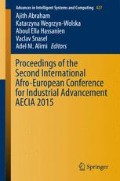Abstract
In this paper the weighted container concept of cover image jointly with error correcting codes perfect in weighted Hamming metric (ECCPWH) is consider. Such approach can improve the efficient of the ECC embedding schemes based on syndrome coding. To show the effectiveness of ECCPWH based scheme the example of multi-level significant bit (MLSB)embedding scheme applied to digital image is provided. ECCPWH based method is compared with the linear error-block codes (LEBC) steganography method that is based on linear error-block codes perfect in \(\pi \)- metric. The examples show that proposed MLSB embedding scheme that is based on ECCPWH approach is efficient for syndrome coding embedding algorithms.
Access this chapter
Tax calculation will be finalised at checkout
Purchases are for personal use only
References
Berger, T., Medeni, M.: Maximum likelihood decoding algorithm for some Goppa and BCH Codes: Application to the matrix encoding method for steganography. In: INTERNET 2012: The Fourth International Conference on Evolving Internet, pp. 85–89 (2012)
Galand, F., Kabatiansky, G.: Information hiding by coverings, In: Proceedings of IEEE Information Theory Workshop, pp. 151–154. Paris (2003)
Munuera, C.: Steganography and error-correcting codes. Signal Process. 87, 1528–1533 (2007)
Medeni, M.B., Souidi, E.M.: A novel steganographic protocol from error-correcting codes. J. Inf. Hiding Multimed. Signal Process. 1(4), 339–343 (2010)
Bezzateev, S., Voloshina, N., Minchenkov V.: Special class of (L, G) codes for watermark protection in DRM. In: Proceedings of Eighth International Conference on Computer Science and Information Technologies, pp. 225–228. Yerevan, Armenia (2011)
Westfeld, A.: A steganographic algorithm. Proceedings of the 4th International Workshop on Information Hiding, pp. 289–302 (2001)
Liao, X., Wen Q.: Embedding in two least significant bits with wet paper coding. CSSE’08: Proceedings of the 2008 International Conference on Computer Science and Software Engineering, pp. 555–558 (2008)
Darit, R., Souidi, E.M.: An application of linear error-block codes in steganography. Int. J. Digit. Inf. Wirel. Commun. 1(2), 426–433 (2011)
Feng, K., Xu, L., Hickernell, F.: Linear error-block codes. Finite Fields Appl. 6, 638–652 (2006)
Bezzateev, S., Voloshina, N., Zhidanov, K.: Steganographic method on weighted container. In: Proceedings of XIII Int. Symposium on Problems of Redundancy in Information and Control System, pp. 10–12. Saint-Petersburg, Russia (2012)
Bezzateev, S., Shekhunova, N.: Class of generalized Goppa codes perfect in weighted Hamming metric. Des. Codes Cryptogr. 66(1–3), 391–399 (2013)
Voloshina, N., Zhidanov, K., Bezzateev, S.: Optimal weighted watermarking for still images. In: Proceedings of XIV International Symposium on Problems of Redundancy in Information and Control System, pp. 98–102 .Saint-Petersburg, Russia (2014)
Darit, R., Souidi, E.M.: New families of perfect linear error-block codes. Int. J. Inf. Coding Theory (IJICOT) 2(2/3), 84–95 (2013)
Darit, R.: These de doctorat: Linear Error-Block Codes and Applications. Universite Mohhamed V Agdal, Faculte des sciences, Rabat (2012)
Darit, R., Souidi, E.M.: A steganographic protocol based on linear error-block codes. In: Proceedings of the 11th International Conference on Security and Cryptography, pp. 178–183. Vienna, Austria, 28–30, August 2014
Acknowledgments
We are grateful to the reviewer for his/her careful reading of the paper and his/her thoughtful comments. His/her comments and advices has helped us improve and clarify the paper.
This work was partly financially supported by the Russian Ministry of Education and Science within a framework of the basic task to the university in 2015 (project number 2452).
Author information
Authors and Affiliations
Corresponding author
Editor information
Editors and Affiliations
Rights and permissions
Copyright information
© 2016 Springer International Publishing Switzerland
About this paper
Cite this paper
Bezzateev, S., Voloshina, N., Zhidanov, K. (2016). Multi-level Significant Bit (MLSB) Embedding Based on Weighted Container Model and Weighted F5 Concept. In: Abraham, A., Wegrzyn-Wolska, K., Hassanien, A., Snasel, V., Alimi, A. (eds) Proceedings of the Second International Afro-European Conference for Industrial Advancement AECIA 2015. Advances in Intelligent Systems and Computing, vol 427. Springer, Cham. https://doi.org/10.1007/978-3-319-29504-6_29
Download citation
DOI: https://doi.org/10.1007/978-3-319-29504-6_29
Published:
Publisher Name: Springer, Cham
Print ISBN: 978-3-319-29503-9
Online ISBN: 978-3-319-29504-6
eBook Packages: EngineeringEngineering (R0)

